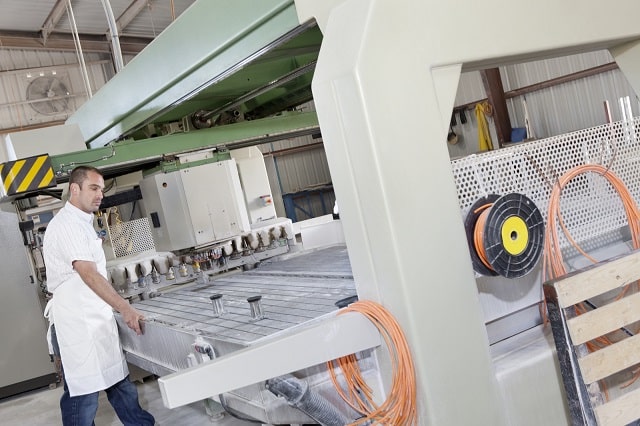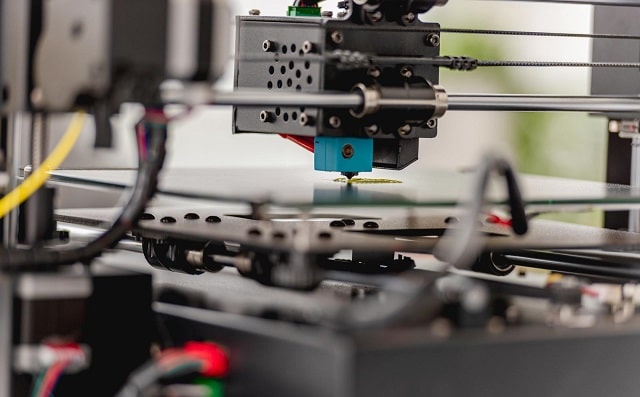Your organization relies on equipment to keep the business moving forward. Whether it’s equipment and tools for workers in the field, a manufacturing plant, or just office equipment, you need to know:
Instead of allowing your equipment to run amok, it’s time to better manage all of your assets — equipment included — so you get more value out of your investments. Better managing your equipment will not only save you money but also strengthen your business’s backbone in an increasingly competitive landscape.
Consult this guide to learn what equipment tracking is and how it’s used in multiple industries, plus expert tips on getting more value from your equipment tracking processes:

“Equipment” refers to any asset in your business used to perform a specific function. Every business defines equipment differently, but this can include:
Equipment tracking (or equipment management) is a type of asset management that helps SMBs and enterprises get more value out of their equipment. Equipment tracking encompasses the processes and tools you use to monitor and manage all of the equipment in your business.
There’s a significant amount of information companies can collect over time about equipment, such as:
While you can document all this information manually, you’ll likely encounter missing information or documentation errors over time due to human error. That’s why equipment tracking software is the best way to track and log these data points and analyze them over time, providing insights such as how much a piece of equipment costs to maintain over its lifespan compared to its output. This data can then be used to inform decisions such as what manufacturers to choose when it’s time to purchase new equipment and whether it’s more cost-effective to repair an existing piece of equipment or replace it.
Although equipment tracking is popular in the construction industry, it has so many applications. Organizations in these industries rely on equipment tracking to optimize equipment utilization and maximize the useful lifespan of their equipment:
For example, the restaurant industry relies on foodservice equipment to prepare food, and it must meet a variety of standards such as the NSF food safety guidelines, FMSA regulations, and sanitary and hygienic design standards, and there are various food equipment certifications equipment can receive to verify its compliance with these requirements. Equipment can be tagged with certification marks and equipment identification tags to convey this information to equipment inspectors, maintenance professionals, and users.
Another example is medical devices, which also are subject to regulations (not only in the U.S. but also in the EU and other regions around the world) and strict standards and must be closely tracked and monitored over time to ensure optimal performance and patient safety.

As your business grows and you add more employees to your team, you’ll also see an uptick in the amount of equipment you have to manage. But lost equipment means lost money — both in terms of replacing missing equipment and the lost productivity that comes with it. Depending on your business, you’ll likely need some type of equipment tracking software to minimize losses:
Equipment tracking software is not a one-size-fits-all solution. While many equipment tracking solutions can accommodate equipment tracking needs for companies in an array of industries, what’s ideal for one company may not be for another. It truly depends on your organization’s needs and the type of equipment you want to track. At any rate, there are several equipment tracking options on the market, so there’s a good chance your organization will find a solution that fits the way you do business.
Why should you track equipment in the first place? While businesses are free to continue using spreadsheets and paper check-in/check-out procedures, equipment tracking streamlines the entire process. You’ll likely see these benefits when you make the switch to a proper equipment tracking system.
How much did you pay for a piece of equipment? Is it helping your team earn more than what you paid for it? If you’re having difficulty knowing when to replace expensive equipment, equipment tracking will tell you when equipment isn’t generating a return on investment (ROI).
A shocking 80% of equipment maintenance is reactive instead of proactive. Instead of simply reacting to broken equipment, equipment tracking enables your maintenance team to conduct proactive maintenance — which is both cheaper and less of a productivity drain than reactive maintenance.
Spend less time wondering what needs maintenance and sleep easier at night. Equipment tracking keeps your maintenance team on an efficient schedule, which translates into getting more value out of your equipment. It can even help you follow the manufacturer’s recommended maintenance routine, so if equipment ever breaks down, your warranty will likely cover it.
Your team doesn’t have the time for complicated check-in/check-out or manual equipment management. Save your employees’ time with equipment tracking so they can spend less time on paperwork and focus instead on meaningful results.
Equipment tracking helps businesses use their resources more efficiently. Over time, that can translate into significant savings. Equipment tracking helps you reduce costs by:
Does your company need to satisfy annual compliance audits? Equipment tracking gives you a much-needed paper trail that shows auditors:
Best of all, the process happens automatically, so equipment tracking improves compliance without an additional burden on your employees.
If your employees serve customers out in the field, chances are good that your team needs equipment to do their jobs well. But without the right equipment, you risk lost productivity and a poor customer experience.
Fortunately, equipment tracking helps you know where everything is in real time. You can check with employees before their jobs to ensure equipment is in its rightful place and in working order, too.
The right equipment tracking system will give you better insights into your equipment use. Equipment tracking software brings everything into a dashboard that serves as a single source of truth. Say goodbye to spreadsheets and paper folders: consult your analytics to make data-driven decisions in mere seconds.

Equipment tracking is a boon to any business, but best practices will help you get even more mileage out of your equipment. Follow these equipment tracking tips to reduce costs and increase ROI.
Spreadsheets can work in a small business, but even so, they’re inefficient and leave too much room for human error. That’s why equipment asset tracking software is a must. It logs everything automatically and can even pinpoint issues that would normally take you hours to untangle.
There are plenty of equipment tracking options on the market, but it’s a good idea to pick software that matches your equipment tracking processes. Software should fit into how you do business instead of shoehorning you into a process that isn’t realistic.
Map out how you want the equipment tracking process to work. How are you tracking equipment right now? What’s not working? From there, look for equipment tracking solutions that best fit your processes.
When in doubt, you can always request a free trial or a demo to ensure the software does everything you need it to do before you commit.
Equipment tracking software simplifies maintenance by providing your maintenance team with checklists. This way, they can go through the proper maintenance procedure for every piece of equipment, every time.
Equipment tracking increases the availability of data points in your business. This means you have the power to track much more than check-in/check-out. Broaden your horizons and track additional equipment data, including:
You don’t need a desktop to look at your equipment tracking information. Choose mobile-optimized equipment tracking software so both administrators and employees can pull up equipment data from anywhere. This is especially helpful if your business tracks equipment in a large campus, manufacturing plant, or factory where workers are on the go.
Most equipment tracking platforms come with helpful reports right out of the box. But don’t be afraid to dig into the software: learn its ins and outs, even if it requires additional training. If you can get more value from your equipment tracking software with customization, do it! Get more value out of the system you’re already paying for. You can learn how to run custom reports on the platform and pull the exact data your team needs to see.
Equipment tracking is only possible with the combination of tracking software and durable equipment tags. You want quality labels that will last the lifetime of your equipment. You don’t want labels that fade in the sun, melt when exposed to chemicals, or become unreadable after abrasion.
Some options, like barcodes or QR codes, are affordable to set up and offer easy and reliable scanning in the field with the use of a barcode scanner or a barcode scanning app on a mobile device. Radio-frequency ID (RFID) tags allow for automatic scanning, but they also come with issues such as potential signal interference, security concerns, and they require field service staff to carry a specific RFID scanning device, as it’s not possible to scan these tags with mobile applications.
Choose the best asset tags for the equipment you want to track. Equipment that isn’t exposed to any harsh environmental conditions may be well-suited for vinyl, polycarbonate, or polyester labels, while high-end manufacturing equipment requires durable labels that last, such as Metalphoto® labels and tags. Customize your approach to balance the quality of your labels with your budget.
Equipment tracking data shouldn’t be available just to your managers or administrators. Make it available to everyone on the team so they’re clear on who owns which assets. If you’re worried about data tampering, most equipment tracking software offers tiered access levels so your employees can’t edit log data, for example.
Manual scanning reduces paperwork and double-entry, but it does open your business up to human error. After all, what if an employee forgets to scan a piece of equipment?
This isn’t always avoidable, but it’s best to automate the process as much as possible. This might mean using RFID tags for automatic scanning or opting for software that auto-generates reports.
Any time you receive an equipment shipment, your team needs to tag the equipment ASAP. The last thing you want is for employees to use untagged equipment, which will throw your equipment tracking processes out the window.
Standard operating procedures (SOPs) are helpful documents detailing your equipment tracking processes. Even if you build equipment tracking into your workflow, your employees will need resources and training for equipment tracking.
New procedures can confuse your team, so be sure to train everyone on the new processes. Better yet, try to build equipment tracking into your team’s workflow so they have no choice but to comply with proper procedures.
It’s tempting to reuse equipment codes, especially if you tag a lot of equipment in your business. But every piece of equipment needs a unique identification code so you can differentiate one asset from another.
Some organizations will reuse codes after they sunset a particular piece of equipment. But if you need to satisfy an annual audit or you want cleaner data, it’s best to start from scratch every time. You can use long strings of numbers and letters to make it easier to generate unique codes.
Every business uses some type of equipment to fulfill its mission. With equipment tracking, you can see the equipment you have and better manage it to maximize the useful lifespan of your equipment assets, reduce costs, improve productivity, and stay competitive.
When it’s time to implement equipment tracking in your business, tag your equipment with durable equipment ID tags and labels that are designed to last. MPC creates high-quality tags that construction companies, manufacturers, and other organizations rely on to track equipment for the long haul, such as industrial name plates and durable data plates designed to remain readable throughout the lifespan of your equipment, even if they’re subject to sustained outdoor exposure, cleaning processes, chemicals or solvents, and extreme temperatures. Metalphoto® aluminum nameplates, for example, offers an expected outdoor lifespan of 20 years or more.
Request a free evaluation kit to test MPC’s nameplates, front panels, labels and tags in your operating conditions.
Our sales engineers are experts in automatic asset tracking, tagging and identification,a nd can answer all your questions. Get in touch now.
Lets Talk ›